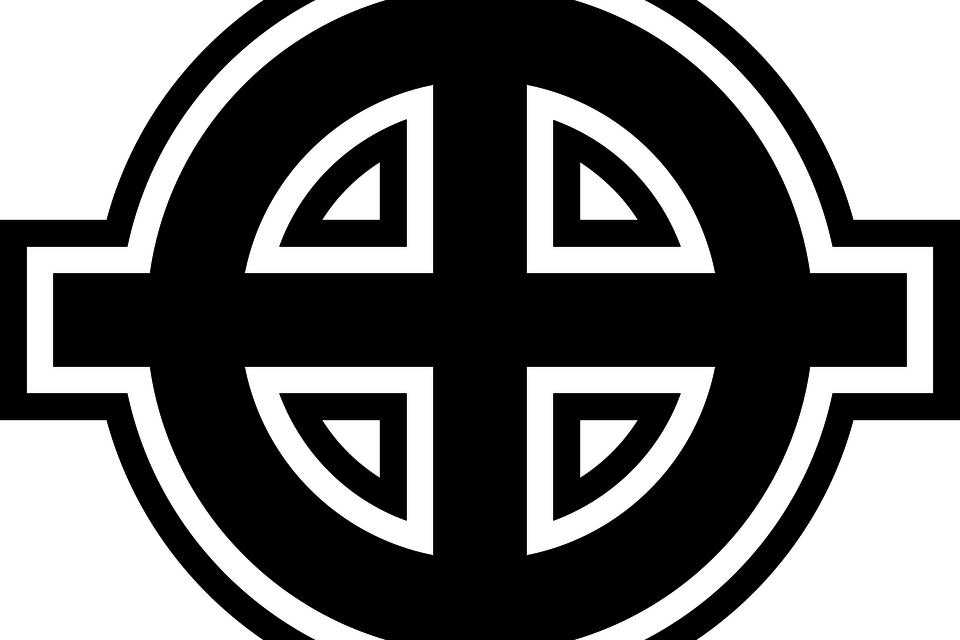By Ryan Whirty, Contributing Writer
The Louisiana Weekly, May 28, 2018 —
What do you do if you’re a white supremacist, but you’re upset that everyone knows you’re a white supremacist and quite understandably doesn’t want anything to do with you because, again, a white supremacist?
You abandon swastika armbands and carrying Confederate flags and conjure up new symbols and emblems for you and your alt-right, white-power minions to speciously and cravenly hide behind.
That’s exactly what many alt-right, neo-Nazi and white-supremacist communities are doing, say experts who monitor the activity of such hate groups. As the Trump presidency has encouraged white-power groups across the country to be more brazen in their protests, writing and recruiting methods, many of them are attempting to draw in new members by dropping older emblems and imagery – such as swastikas and Rebel flags – that might turn off potential recruits and replacing the symbols with alternate symbols that might seem more appealing to prospective new members.

The white supremacist version of the Celtic Cross, which consists of a square cross interlocking with or surrounded by a circle, is one of the most important and commonly used white supremacist symbols. Although usually called a Celtic Cross by white supremacists, its origins date to the pre-Christian “sun cross” or “wheel cross” in ancient Europe.
By dredging up – and, in many cases, completely misunderstanding and misapplying – centuries-old imagery that allegedly represents historical, white, racial superiority, hate groups are hoping to seduce vulnerable, confused men and women into their ranks.
“It’s a classic rebranding effort,” said Keegan Hankes of the Southern Poverty Law Center. “They have a noxious belief system, so they have to package it so they don’t totally turn off potential recruits.”

The Valknut. A commonly usurped symbol is the Valknut—three interlocking triangles—another symbol seen at Charlottesville. Known as the “knot of the slain,” the Valknut represents the afterlife.
Such rebranded imagery includes lesser-known symbols for the Ku Klux Klan; Latin emblems from the Crusades; an English version of the German “blood and soil” image and the “imperial eagle” of Nazi Germany; early symbols of the American Nazi Party; and even the logo of the Detroit Red Wings hockey team.
Hate groups have taken particular interest in imagery from Norse and Celtic history and mythology, especially Scandinavian cultures. Nazi Germany claimed that Norse identity was one of the forerunners and contributors to the nation of the Aryan ideal espoused by Hitler. University of New Orleans associate professor of anthropology Dr. David Beriss – whose academic focus includes the way symbols are used in societies, especially in Europe – said that some American white supremacist groups could be using older, lesser known Norse and Celtic symbols as a way to claim their organizations don’t espouse racism, but simply pride in their own ancestry. That genealogy, the groups say, just happens to be European and white.

Tiw or Tyr (left) and Othala or Odal (right) are two runes that have been co-opted by hate groups. The rune letter Tiw, named for the Norse god Tiw or Tyr, the god of law and order and the vanquisher of evil. (Tiw was the chief deity in the original Germanic and Norse pantheon, later to be replaced by Thor.)
“Some of [the hate groups] are trying to claim that they are not racist or white supremacist,” he said. “They assert that they just want to establish and promote some kind of pride in whiteness. So they have chosen to pick out a few ancient symbols from Norse mythology, or other northern European traditions, and use them to create a kind of mythical white identity.”
Beriss added that similar efforts have been underway for decades by far-right groups in Europe, a movement that has produced imagery that skirts laws prohibiting swastikas or other traditional Nazi/white supremacist symbols.
In addition, still evolving American white power groups can look to and identify with the images used by their counterparts in Europe, creating what white supremacists believe is a global identity and brotherhood.
“There is no necessary historic connection between the Norse symbols they deploy and the ideology of modern hate groups,” he said. “Members of the so-called ‘alt-right’ in the U.S. can recognize themselves in the flags, signs and tattoos they might see in the media covering far-right events in Europe. This can help them feel like they are part of a bigger movement.”
Beriss said that such identity based on mythology and imagined history can be specious at best, with no real connection existing between modern hate-group ideology and centuries-old, northern European imagery. In essence, he said, alt-right groups could be conjuring a shared mythology that simply isn’t there.
“There is no necessary historic connection between the Norse symbols they deploy and the ideology of modern hate groups,” he said.
But such linkage between past and present, no matter how inaccurate or imagined, has unfortunately been successful to a certain extent, said the SPLC’s Hankes. He said many new hate group members have been successfully recruited using such rebranding and outreach programs.
“Objectively,” he said, “it has worked.”
Hankes said people targeted as potential recruits by alt-right groups shouldn’t fall for such the trickery and cultural misappropriation that can. Such vulnerable people shouldn’t be deceived by the overtures they’re getting.
“They know exactly what they believe,” Hankes said. “It has to do making themselves more appealing to get new membership.”
To combat the rise and influence of imagery, Hankes said, the public needs to be informed about the vague, imagined philosophical ethoses espoused by hate groups so they aren’t hoodwinked by such imagery-based philosophical and psychological sales pitches.
“You write about it and expose it for what it is,” he said.











